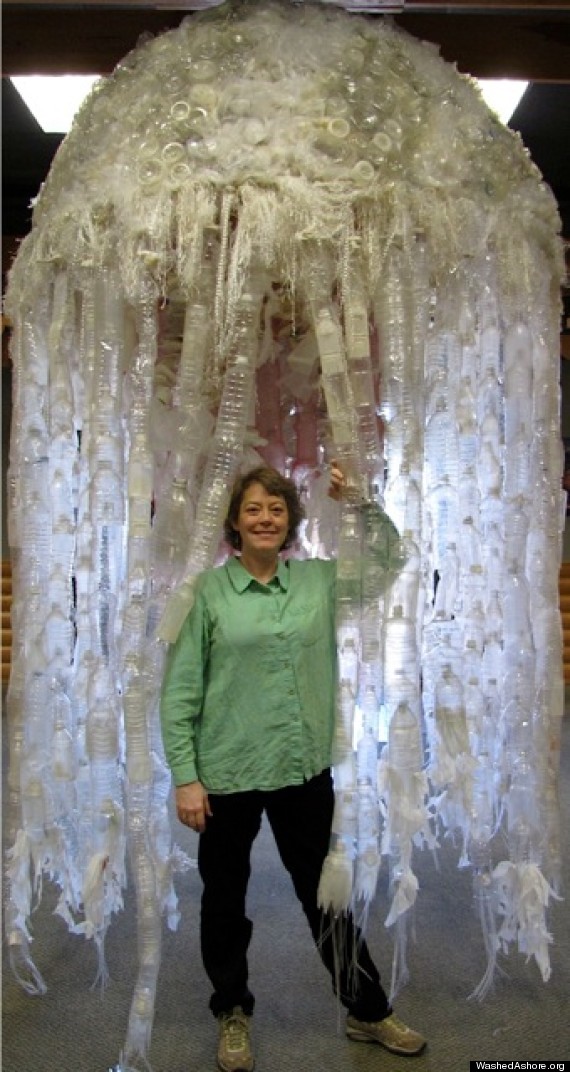
Transmitting news and infomation about sustainable endeavors in Coastal Virginia and beyond. Updated Weekly.
Celebrating the Sea & Talking Trash
Updated 24 June 2014 by Carol Brighton
Washed Ashore Art Exhibit at the Virginia Aquarium
With recognition by both the White House and the UN, the ocean is officially acknowledged and celebrated in June. To put a spotlight on the scourge of the sea, plastic pollution, the Virginia Aquarium is exhibiting art created from beach trash. The “Washed Ashore” collection contains larger than life whimsical sculptures of sea life most impacted by marine debris. The creatures are fashioned from common easily recognizable plastic products harvested along the shoreline. Angela Haseltine Pozzi an artist and curator of the Washed Ashore Project was troubled by the confetti like mixture of plastics strewn along her local beach and decided to make a difference. Inspired by the work of the Captain Charles Moore, who first discovered and publicized the North Pacific Garbage Patch, a soupy mixture of floating plastic twice the size of Texas, she undertook a community trash art project. By attracting visitors with the beauty of her work, Pozzi is trying to teach the public about the horrifying reality of plastics in the sea. As Pozzi puts it, she uses “the lure of the plastics themselves to get people to come.” The exhibit runs through September 28.
The Sea is Full of Debris
The amount of floating debris in the world’s ocean is staggering. It has been estimated that some 20 million tons of plastic debris enter the ocean every year. Because plastics don’t biodegrade, the sheer volume of the material in the sea is skyrocketing supported by a growing proliferation of plastic products. All five of the major ocean gyres serve as repositories for vast quantities of plastics, the bulk of which were erroneously discarded on land. The North Pacific garbage patch, infamous as the world’s largest trash collection, has received the most scientific exploration. In a 1999 study of zooplankton in the patch, scientists found that plastics outweighed the amount of plankton by a ratio of 6 to 1. Plastics are now so pervasive that entire ecosystems reliant on ocean pollution have evolved and a new word describing this environment, the 'Plastisphere" has become part of our lexicon. 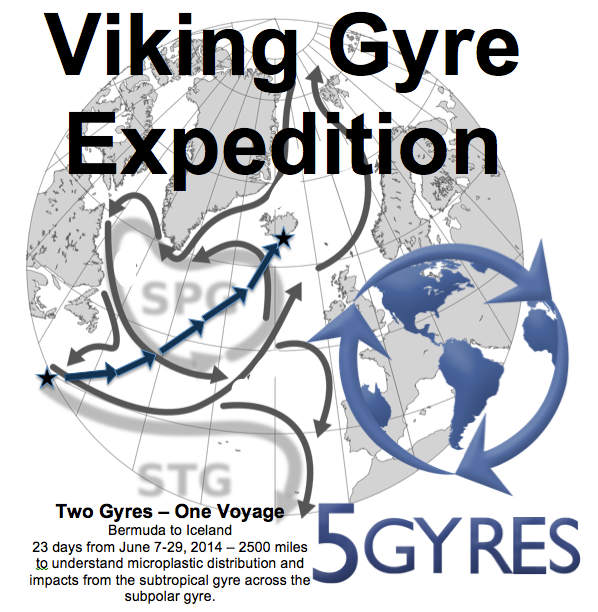
Research on the North Atlantic now Underway
To collect data on garbage in the North Atlantic, 5gyres a marine debris research organization is conducting studies this summer. Departing June 9th from Bermuda a crew of 14 scientists, conservations and photographers are sailing on a three week expedition to Reykjavik, Iceland .
You can follow the Sea Dragon on its Viking Gyre Expedition via facebook and on the 5gyres blog. The sites will be updated with posts on findings and the crew welcomes queries from the public.
Clearwater Mills Trash Interceptor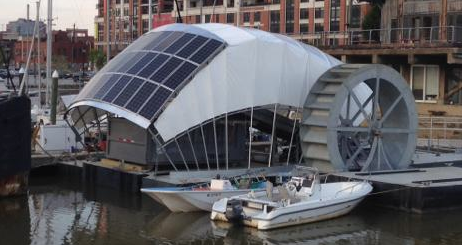 Fifty eight square miles of land drain into the Baltimore Harbor via the Jones Falls Watershed. During rain events, debris is carried into the Harbor where it accumulates. To remove the mass of floating garbage that arrives during every storm, a floating trash collection system has been deployed. Powered by the sun and river current, the barge system can remove 50,000 pounds of garbage a day.
Fifty eight square miles of land drain into the Baltimore Harbor via the Jones Falls Watershed. During rain events, debris is carried into the Harbor where it accumulates. To remove the mass of floating garbage that arrives during every storm, a floating trash collection system has been deployed. Powered by the sun and river current, the barge system can remove 50,000 pounds of garbage a day.
Swift flowing storm waters spin the water wheel which is attached to a conveyor belt. Debris funneled by floating booms is slowly carried from the water's surface and deposited into a large container. In addition to capturing trash, the wheel also helps aerate the water. Click on the image to watch a youtube of the device at work. Follow Clearwater Mills on Facebook.
New Plastic Source Considered a Threat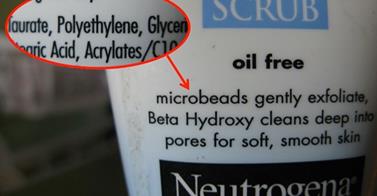
Up until recently, most plastic pollution inadvertently travelled from land to the marine ecosystem. Now a new threat is posed by miniscule plastics contained in a host of personal care products that are flushed to the sea through the sewage system. Products that contain microbeads are made from polyethylene and do not biodegrade. Dr. Kirk Havens of the Virginia Institute of Marine Sciences at William and Mary recently discussed the problem and work being conducted at VIMS to find a biodegradable replacement material produced from bacteria (watch webinar recording).
There is also momentum to ban microbeads. Federal legislation was just introduced in the the House of Representative to ban plastic microbeads in cosmetics. Meanwhile Illinois has just become the first state to ban microbeads while California, and New York state lawmakers are considering bans. According to Beat the Microbead, a watchdog organization, Unilever, Johnson and Johnson, and Ikea have all pledged to remove microbeads from their products. Target also recently announced that it is working with vendors to remove plastics from their own branded products. You can follow the latest news about microbeads at the Beat the Microbead website where you can view a listing of microbead products to avoid and also download smartphone apps to scan a product bar code for information on harmful plastics.
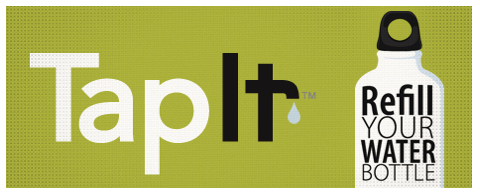
Local campaign to reduce plastic use promotes the use of reusable water containers.
Visit the AskHRGreen website to access the TapIt™ Network. Through their website, you can find a listing of local businesses that provide free access to potable water. There you can also download the Hampton Roads App for Android Devices. A local iphone app is coming soon.
Eager to learn more about local involvement in sustainable efforts? Follow TidewaterCurrent on Facebook and Pinterest.
More Features:
Nature at Work - Building Ecological Infrastructure
Check the Archive for Previous Posts
All Rights Reserved. Disclaimer.


